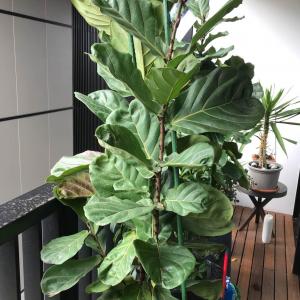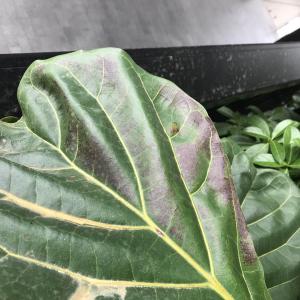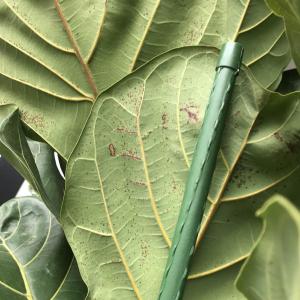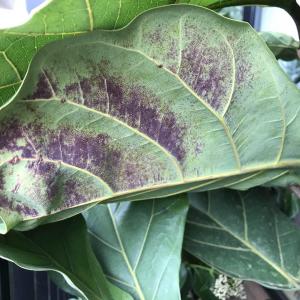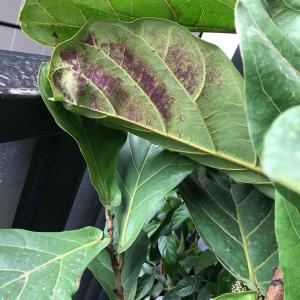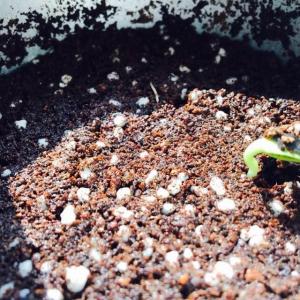成长记
cclecombe
2017年10月13日

Down to one leaf as someone (Henry) decided to pull it out and destroy it!
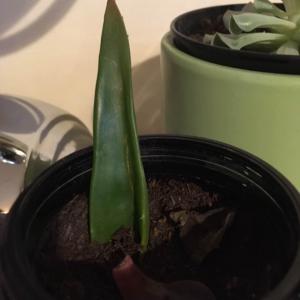

0
0
求助
Autumn Kayla Ferguson
2017年10月08日

Anyone know what kind of leaf this is?
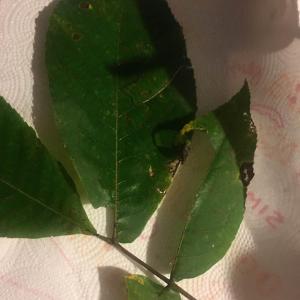

0
0
萌萌的南瓜:It's too hard to recognize, maybe is this plant's leaves ☘
文章
Dummer. ゛☀
2017年10月02日

Jade Plant (Crassula ovata) is recommended for warts in folk medicine. A leaf is cut open and the moist flesh is bound over the wart for a series of days. If the treatment is successful, the wart falls off after prolonged exposure.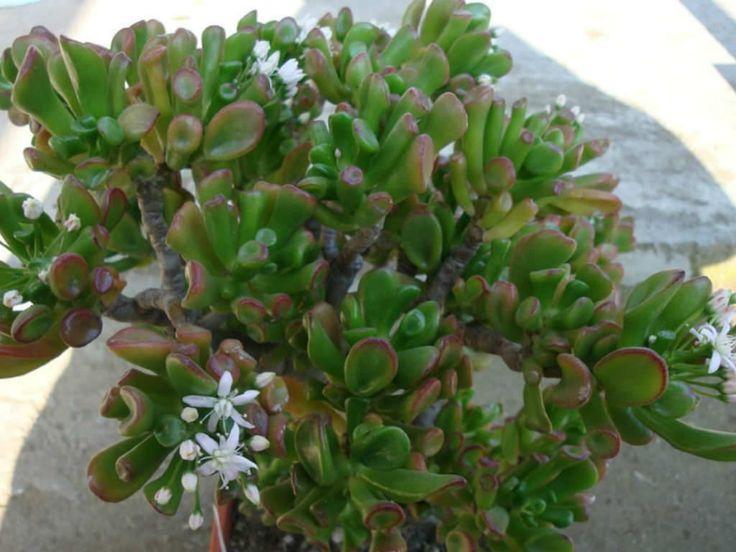
Jade Plant is also used as a treatment for nausea, and in Africa it is used to treat epilepsy, corns, diarrhea, and to purge the intestines. The Khoi and other Africans used the roots for food, grated and cooked, eaten with thick milk. They also used the leaves for medicinal purposes. The leaves were boiled in milk and used to treat epilepsy and corns, as a purgative and as a remedy for diarrhea.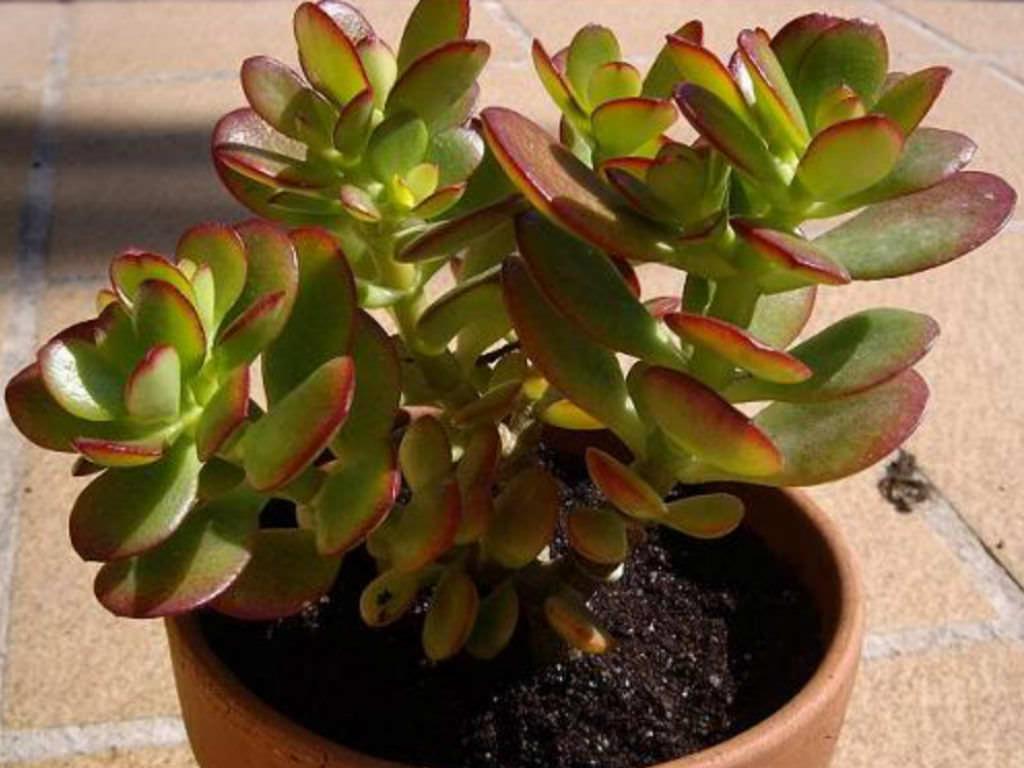
The Feng Shui masters believe that Jade Plants have calming effects.

Jade Plant is also used as a treatment for nausea, and in Africa it is used to treat epilepsy, corns, diarrhea, and to purge the intestines. The Khoi and other Africans used the roots for food, grated and cooked, eaten with thick milk. They also used the leaves for medicinal purposes. The leaves were boiled in milk and used to treat epilepsy and corns, as a purgative and as a remedy for diarrhea.

The Feng Shui masters believe that Jade Plants have calming effects.

1
1
文章
Dummer. ゛☀
2017年10月02日

Scientific Name
Titanopsis calcarea (Marloth) Schwantes
Common Names
Concrete Leaf, Jewel Weed, Carpet Leaf, Sheep’s Tongue, Living Stone
Synonyms
Titanopsis calcareum
Scientific Classification
Family: Aizoaceae
Subfamily: Ruschioideae
Genus: Titanopsis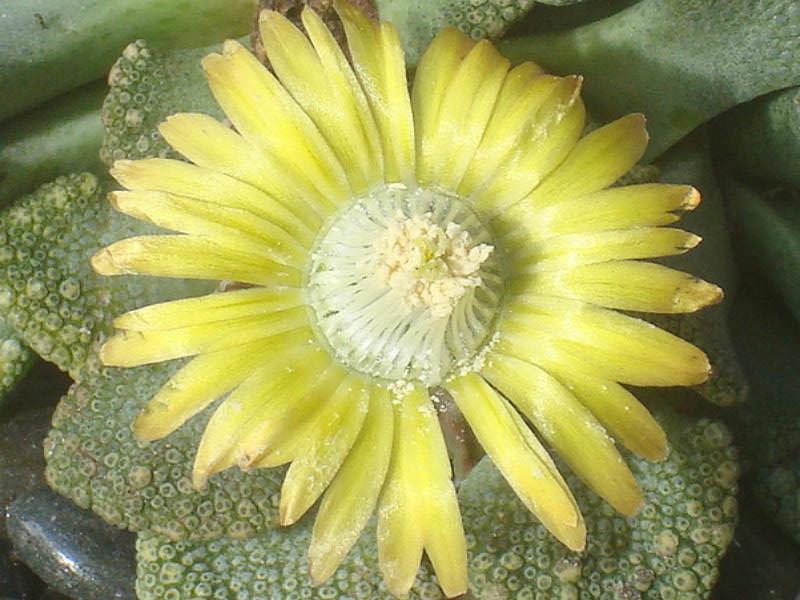
Description
Titanopsis calcarea (Concrete Leaf) is a mat forming succulent with basal rosettes up to 3 inches (7.5 cm) in diameter. Fleshy leaves, up to 1 inch (2.5 cm) long with truncate tip, usually grey or blue-green, densely covered at the apex with whitish, creamy grey, ochre, red or bluish rough tubercles. Yellow to orange flowers, 0.8 inch (2 cm) in diameter.
Hardiness
USDA hardiness zone 9a to 11b: from 20 °F (−6.7 °C) to 50 °F (+10 °C).
How to Grow and Care
Titanopsis grows to form clumps. These clumps can be divided for further propagation of the plant.
The maintenance of Titanopsis is not difficult. They need a sandy substrate with little organic material. They are winter grower, and should be kept relatively dry in summer. They should also be kept dry when the temperature is below 45° F (7° C).
Division of larger clumps is possible in some cases, but as most species have tuberous rootstocks and offset slowly, seed production is the most common method of propagation. Sow it in spring and it should start flowering after two years.
Titanopsis calcarea (Marloth) Schwantes
Common Names
Concrete Leaf, Jewel Weed, Carpet Leaf, Sheep’s Tongue, Living Stone

Synonyms
Titanopsis calcareum
Scientific Classification
Family: Aizoaceae
Subfamily: Ruschioideae
Genus: Titanopsis

Description
Titanopsis calcarea (Concrete Leaf) is a mat forming succulent with basal rosettes up to 3 inches (7.5 cm) in diameter. Fleshy leaves, up to 1 inch (2.5 cm) long with truncate tip, usually grey or blue-green, densely covered at the apex with whitish, creamy grey, ochre, red or bluish rough tubercles. Yellow to orange flowers, 0.8 inch (2 cm) in diameter.

Hardiness
USDA hardiness zone 9a to 11b: from 20 °F (−6.7 °C) to 50 °F (+10 °C).
How to Grow and Care
Titanopsis grows to form clumps. These clumps can be divided for further propagation of the plant.
The maintenance of Titanopsis is not difficult. They need a sandy substrate with little organic material. They are winter grower, and should be kept relatively dry in summer. They should also be kept dry when the temperature is below 45° F (7° C).

Division of larger clumps is possible in some cases, but as most species have tuberous rootstocks and offset slowly, seed production is the most common method of propagation. Sow it in spring and it should start flowering after two years.
0
0
文章
Dummer. ゛☀
2017年10月02日

Scientific Name
Sedum dasyphyllum L.
Common Names
Corsican Stonecrop, Thick-leaved Stonecrop, Thick Leaf Stonecrop, Blue Tears Sedum, Love and Tangles, Love and Tangle
Synonyms
Oreosedum dasyphyllum, Sedum burnatii, Sedum corsicum, Sedum glanduliferum, Sedum glaucum, Sedum moroderi, Sedum nebrodense
Scientific Classification
Family: Crassulaceae
Subfamily: Sedoideae
Tribe: Sedeae
Subtribe: Sedinae
Genus: Sedum
Description
Sedum dasyphyllum is a small perennial plant up to 5 inches (12.5 cm) tall when in flower, with green-turquoise or gray-green opposite leaves and a creeping stem forming shrubs. The flowers are white and small with little black dots on the petals and green ovaries.
How to Grow and Care
When growing Sedum, keep in mind that Sedum plants need very little attention or care. They will thrive in conditions that many other plants thrive in, but will do just as well in less hospitable areas. They are ideal for that part of your yard that gets too much sun or too little water to grow anything else. A common name for Sedum is Stonecrop, due to the fact that many gardeners joke that only stones need less care and live longer.
Sedum is easily planted. For shorter varieties, simply laying the plant on the ground where you want it to grow is normally enough to get the Sedum plant started there. They will send out roots from wherever the stem is touching the ground and root itself. If you would like to further ensure that the plant will start there, you can add a very thin covering of soil over the plant. For taller Sedum varieties, you can break off one of the stems and push it into the ground where you would like to grow it.
Sedum dasyphyllum L.
Common Names
Corsican Stonecrop, Thick-leaved Stonecrop, Thick Leaf Stonecrop, Blue Tears Sedum, Love and Tangles, Love and Tangle

Synonyms
Oreosedum dasyphyllum, Sedum burnatii, Sedum corsicum, Sedum glanduliferum, Sedum glaucum, Sedum moroderi, Sedum nebrodense
Scientific Classification
Family: Crassulaceae
Subfamily: Sedoideae
Tribe: Sedeae
Subtribe: Sedinae
Genus: Sedum

Description
Sedum dasyphyllum is a small perennial plant up to 5 inches (12.5 cm) tall when in flower, with green-turquoise or gray-green opposite leaves and a creeping stem forming shrubs. The flowers are white and small with little black dots on the petals and green ovaries.

How to Grow and Care
When growing Sedum, keep in mind that Sedum plants need very little attention or care. They will thrive in conditions that many other plants thrive in, but will do just as well in less hospitable areas. They are ideal for that part of your yard that gets too much sun or too little water to grow anything else. A common name for Sedum is Stonecrop, due to the fact that many gardeners joke that only stones need less care and live longer.

Sedum is easily planted. For shorter varieties, simply laying the plant on the ground where you want it to grow is normally enough to get the Sedum plant started there. They will send out roots from wherever the stem is touching the ground and root itself. If you would like to further ensure that the plant will start there, you can add a very thin covering of soil over the plant. For taller Sedum varieties, you can break off one of the stems and push it into the ground where you would like to grow it.
1
2
文章
Dummer. ゛☀
2017年10月02日

Scientific Name
Sedum dasyphyllum ‘Minor’
Common Names
Corsican Stonecrop, Thick-leaved Stonecrop, Thick Leaf Stonecrop, Blue Tears Sedum, Love and Tangles, Love and Tangle
Scientific Classification
Family: Crassulaceae
Subfamily: Sedoideae
Tribe: Sedeae
Subtribe: Sedinae
Genus: Sedum
Description
Sedum dasyphyllum ‘Minor’ is a small, perennial succulent plant, up to 5 inches (12.5 cm) tall when in flower, with blue-green and purple (more purple in part sun), opposite leaves and a creeping stem forming shrubs. The flowers are white and small with little black dots on the petals and green ovaries.
How to Grow and Care
When growing Sedum, keep in mind that Sedum plants need very little attention or care. They will thrive in conditions that many other plants thrive in, but will do just as well in less hospitable areas. They are ideal for that part of your yard that gets too much sun or too little water to grow anything else. A common name for Sedum is Stonecrop, due to the fact that many gardeners joke that only stones need less care and live longer.
Sedum is easily planted. For shorter varieties, simply laying the plant on the ground where you want it to grow is normally enough to get the Sedum plant started there. They will send out roots from wherever the stem is touching the ground and root itself. If you would like to further ensure that the plant will start there, you can add a very thin covering of soil over the plant. For taller Sedum varieties, you can break off one of the stems and push it into the ground where you would like to grow it.
Sedum dasyphyllum ‘Minor’
Common Names
Corsican Stonecrop, Thick-leaved Stonecrop, Thick Leaf Stonecrop, Blue Tears Sedum, Love and Tangles, Love and Tangle

Scientific Classification
Family: Crassulaceae
Subfamily: Sedoideae
Tribe: Sedeae
Subtribe: Sedinae
Genus: Sedum

Description
Sedum dasyphyllum ‘Minor’ is a small, perennial succulent plant, up to 5 inches (12.5 cm) tall when in flower, with blue-green and purple (more purple in part sun), opposite leaves and a creeping stem forming shrubs. The flowers are white and small with little black dots on the petals and green ovaries.

How to Grow and Care
When growing Sedum, keep in mind that Sedum plants need very little attention or care. They will thrive in conditions that many other plants thrive in, but will do just as well in less hospitable areas. They are ideal for that part of your yard that gets too much sun or too little water to grow anything else. A common name for Sedum is Stonecrop, due to the fact that many gardeners joke that only stones need less care and live longer.

Sedum is easily planted. For shorter varieties, simply laying the plant on the ground where you want it to grow is normally enough to get the Sedum plant started there. They will send out roots from wherever the stem is touching the ground and root itself. If you would like to further ensure that the plant will start there, you can add a very thin covering of soil over the plant. For taller Sedum varieties, you can break off one of the stems and push it into the ground where you would like to grow it.
1
5
文章
Dummer. ゛☀
2017年10月02日

Scientific Name
Senecio cylindricus (A.Berger) Jacobsen
Common Names
Narrow-Leaf Chalk Sticks, Blue Chalk Fingers
Synonyms
Senecio vitalis, Senecio talinoides subsp. cylindricus
Scientific Classification
Family: Asteraceae
Subfamily: Asteroideae
Tribe: Senecioneae
Subtribe: Senecioninae
Genus: Senecio
Description
Senecio cylindricus is a low growing succulent shrub up to 24 inches (60 cm) tall and spreading up to 5 feet (1.5 m) wide with semi-prostrate stems that turn upright and are crowded at the tips with up to 5 inches (12.5 cm) long, slender and slightly upcurved, gray-green, tubular leaves. The small, rayless, dull cream colored flowers appear in corymbs in late spring to early summer.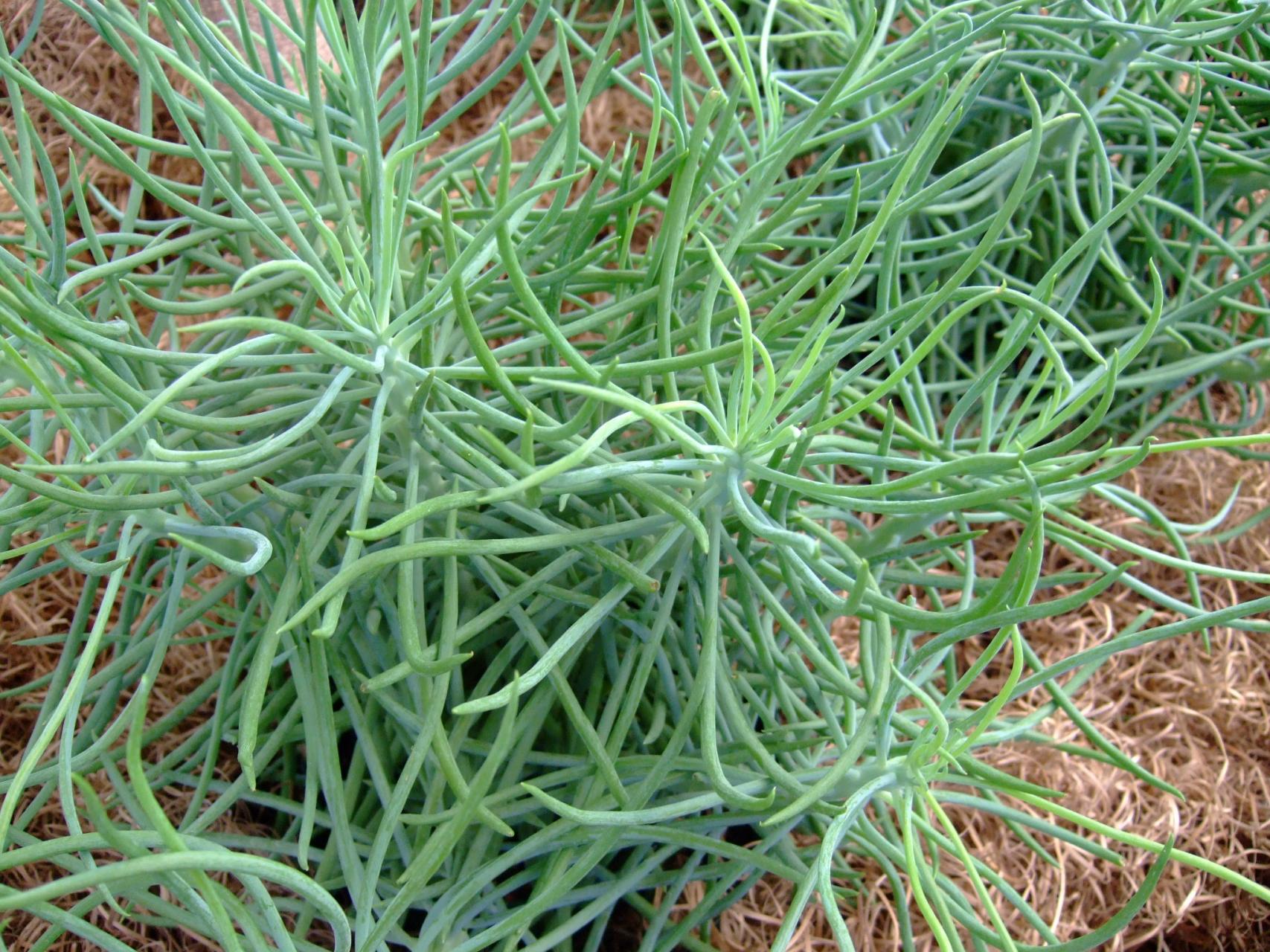
How to Grow and Care
Established plants are extremely drought tolerant. They do need some water, during the summer, but do not leave the soil wet for prolonged periods. Allow the soil to dry out between waterings in the winter, when they are somewhat dormant. Since they are growing in sandy soil, nutrients will need to be replenished. Fertilize annually, but lightly. Too much fertilizer will cause a lot of leggy growth.
Taller varieties can get floppy. You can prune them back to where the stem is firm, in very early spring. You can even root the cuttings. Plants can be divided or repotted in early spring. If you are growing them in containers, they enjoy spending the summer outdoors. Wait until there is no danger of frost and move them back indoors in the fall.
Senecio cylindricus (A.Berger) Jacobsen
Common Names
Narrow-Leaf Chalk Sticks, Blue Chalk Fingers
Synonyms
Senecio vitalis, Senecio talinoides subsp. cylindricus

Scientific Classification
Family: Asteraceae
Subfamily: Asteroideae
Tribe: Senecioneae
Subtribe: Senecioninae
Genus: Senecio

Description
Senecio cylindricus is a low growing succulent shrub up to 24 inches (60 cm) tall and spreading up to 5 feet (1.5 m) wide with semi-prostrate stems that turn upright and are crowded at the tips with up to 5 inches (12.5 cm) long, slender and slightly upcurved, gray-green, tubular leaves. The small, rayless, dull cream colored flowers appear in corymbs in late spring to early summer.

How to Grow and Care
Established plants are extremely drought tolerant. They do need some water, during the summer, but do not leave the soil wet for prolonged periods. Allow the soil to dry out between waterings in the winter, when they are somewhat dormant. Since they are growing in sandy soil, nutrients will need to be replenished. Fertilize annually, but lightly. Too much fertilizer will cause a lot of leggy growth.

Taller varieties can get floppy. You can prune them back to where the stem is firm, in very early spring. You can even root the cuttings. Plants can be divided or repotted in early spring. If you are growing them in containers, they enjoy spending the summer outdoors. Wait until there is no danger of frost and move them back indoors in the fall.
1
0
文章
Dummer. ゛☀
2017年10月01日

Scientific Name
Pereskia aculeata Mill.
Common Names
Barbados Gooseberry, Barbados Shrub, Leaf Cactus, Ora-Pro-Nobis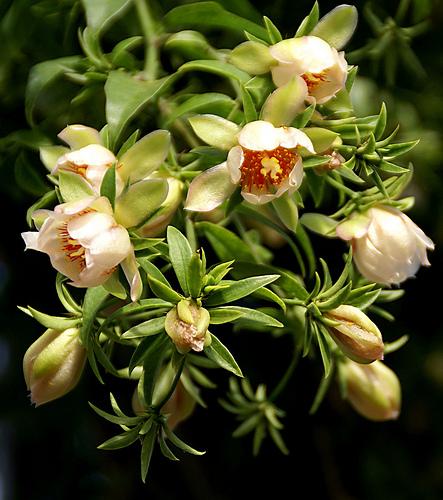
Synonyms
Cactus lucidus, Cactus pereskia, Pereskia foetens, Pereskia fragrans, Pereskia godseffiana, Pereskia longispina, Pereskia pereskia, Pereskia rubescens, Pereskia undulata
Scientific Classification
Family: Cactaceae
Subfamily: Pereskioideae
Genus: Pereskia
Description
Pereskia aculeata is a scrambling vine growing up to 33 feet (10 m) tall in trees, with stems up to 1.2 inches (3 cm) thick. Younger stems have hooked thorns and older stems have clusters of woody spines. The leaves are up to 4 inches (10 cm) long and up to 1.6 inches (4 cm) wide, simple, entire, and deciduous in the dry season. The strongly scented flowers are white, cream or pinkish, up to 2 inches (5 cm) in diameter, and numerous, produced in panicles. The fruit is a rounded berry, translucent white to pink, yellow, orange or red, and up to 0.8 inch (2 cm) in diameter.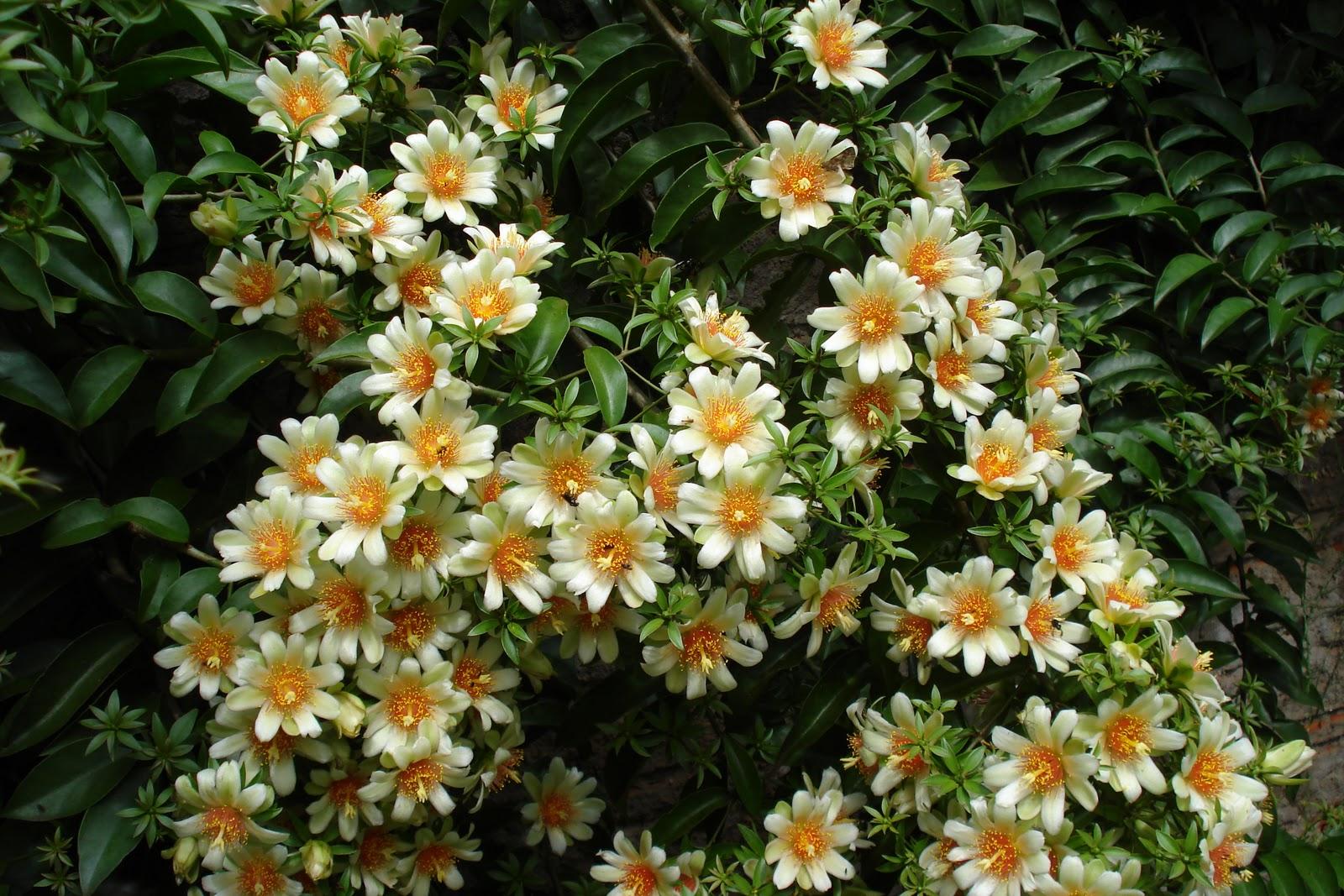
How to Grow and Care
As with many cacti, Pereskias can be almost ignored and still flourish. One of the major advantages that succulents pose as houseplants is their ease, and overwatering or overfeeding them is a bigger danger than neglecting them because it can damage their roots. If you repot them, remember to leave them alone for a brief period so as to avoid overstressing them, and make sure to keep an eye out for common houseplant pests.
Pereskia aculeata Mill.
Common Names
Barbados Gooseberry, Barbados Shrub, Leaf Cactus, Ora-Pro-Nobis

Synonyms
Cactus lucidus, Cactus pereskia, Pereskia foetens, Pereskia fragrans, Pereskia godseffiana, Pereskia longispina, Pereskia pereskia, Pereskia rubescens, Pereskia undulata
Scientific Classification
Family: Cactaceae
Subfamily: Pereskioideae
Genus: Pereskia

Description
Pereskia aculeata is a scrambling vine growing up to 33 feet (10 m) tall in trees, with stems up to 1.2 inches (3 cm) thick. Younger stems have hooked thorns and older stems have clusters of woody spines. The leaves are up to 4 inches (10 cm) long and up to 1.6 inches (4 cm) wide, simple, entire, and deciduous in the dry season. The strongly scented flowers are white, cream or pinkish, up to 2 inches (5 cm) in diameter, and numerous, produced in panicles. The fruit is a rounded berry, translucent white to pink, yellow, orange or red, and up to 0.8 inch (2 cm) in diameter.

How to Grow and Care
As with many cacti, Pereskias can be almost ignored and still flourish. One of the major advantages that succulents pose as houseplants is their ease, and overwatering or overfeeding them is a bigger danger than neglecting them because it can damage their roots. If you repot them, remember to leave them alone for a brief period so as to avoid overstressing them, and make sure to keep an eye out for common houseplant pests.
0
0
文章
Dummer. ゛☀
2017年10月01日

Scientific Name
Sedum caeruleum L.
Common Names
Azure Stonecrop, Blue Stonecrop, Sky Stone Crop, Baby-blue Stone Crop, Red Leaf, Barbary Stones
Synonyms
Anacampseros caerulescens, Oreosedum caeruleum, Sedum azureum, Sedum coeruleum, Sedum heptapetalum
Scientific Classification
Family: Crassulaceae
Subfamily: Sedoideae
Tribe: Sedeae
Subtribe: Sedinae
Genus: Sedum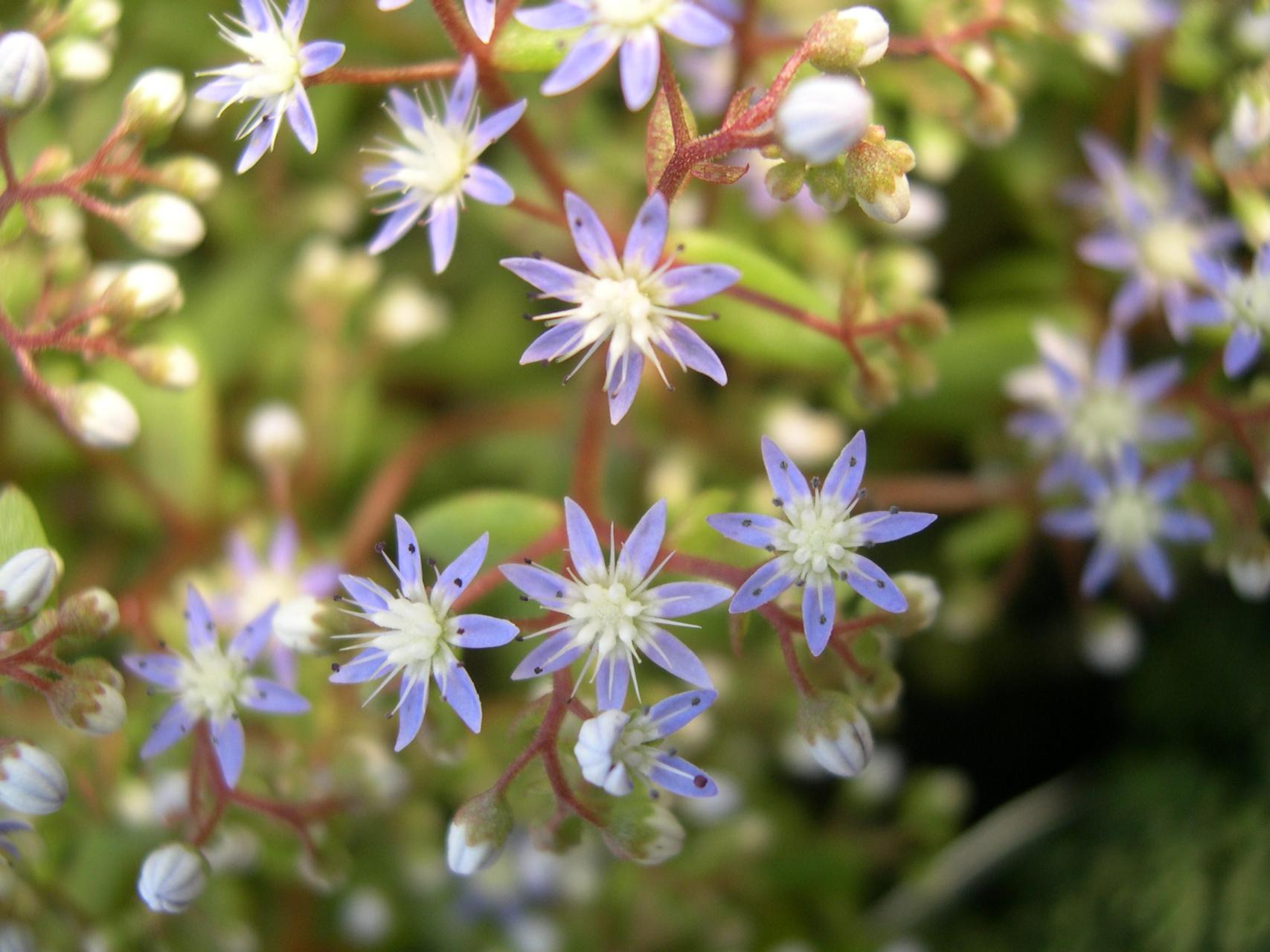
Description
Sedum caeruleum is an annual, succulent, bushy herb, simple or much branched from the base, erect, up to 6 inches (15 cm) tall. The leaves are green, narrowly oblong and usually tinted red, up to 1 inch (2.5 cm) long. It produces cymes of pale blue or white (rarely pinkish), many-stellate flowers from July to September.
How to Grow and Care
When growing Sedum, keep in mind that Sedum plants need very little attention or care. They will thrive in conditions that many other plants thrive in, but will do just as well in less hospitable areas. They are ideal for that part of your yard that gets too much sun or too little water to grow anything else. A common name for Sedum is Stonecrop, due to the fact that many gardeners joke that only stones need less care and live longer.
Sedum is easily planted. For shorter varieties, simply laying the plant on the ground where you want it to grow is normally enough to get the Sedum plant started there. They will send out roots from wherever the stem is touching the ground and root itself. If you would like to further ensure that the plant will start there, you can add a very thin covering of soil over the plant. For taller Sedum varieties, you can break off one of the stems and push it into the ground where you would like to grow it.
Sedum caeruleum L.

Common Names
Azure Stonecrop, Blue Stonecrop, Sky Stone Crop, Baby-blue Stone Crop, Red Leaf, Barbary Stones
Synonyms
Anacampseros caerulescens, Oreosedum caeruleum, Sedum azureum, Sedum coeruleum, Sedum heptapetalum
Scientific Classification
Family: Crassulaceae
Subfamily: Sedoideae
Tribe: Sedeae
Subtribe: Sedinae
Genus: Sedum

Description
Sedum caeruleum is an annual, succulent, bushy herb, simple or much branched from the base, erect, up to 6 inches (15 cm) tall. The leaves are green, narrowly oblong and usually tinted red, up to 1 inch (2.5 cm) long. It produces cymes of pale blue or white (rarely pinkish), many-stellate flowers from July to September.

How to Grow and Care
When growing Sedum, keep in mind that Sedum plants need very little attention or care. They will thrive in conditions that many other plants thrive in, but will do just as well in less hospitable areas. They are ideal for that part of your yard that gets too much sun or too little water to grow anything else. A common name for Sedum is Stonecrop, due to the fact that many gardeners joke that only stones need less care and live longer.

Sedum is easily planted. For shorter varieties, simply laying the plant on the ground where you want it to grow is normally enough to get the Sedum plant started there. They will send out roots from wherever the stem is touching the ground and root itself. If you would like to further ensure that the plant will start there, you can add a very thin covering of soil over the plant. For taller Sedum varieties, you can break off one of the stems and push it into the ground where you would like to grow it.
0
2
文章
Dummer. ゛☀
2017年10月01日

Scientific Name
Kalanchoe pinnata (Lam.) Pers.
Common Names
Air Plant, Cathedral Bells, Life Plant, Miracle Leaf, Goethe Plant, Curtain Plant, Floppers, Good Luck Leaf, Mexican Love Plant, Mother in Law
Synonyms
Cotyledon pinnata (basionym), Bryophyllum calycinum, Bryophyllum pinnatum, Crassula pinnata
Scientific Classification
Family: Crassulaceae
Subfamily: Sedoideae
Tribe: Kalanchoeae
Genus: Kalanchoe
Description
Kalanchoe pinnata is an erect succulent, glabrous herb, up to 5 feet (1.2 m) tall. The stems are hollow, fleshy and dark green. Leaves are scalloped and red along margins. Flowers are bell‐like, reddish-purple, pendent, in large spreading panicles with opposite stout branches.
How to Grow and Care
Kalanchoes are not particularly hard to grow, and the flowering varieties are highly rewarding for their colorful and long-lasting flowers. Many people discard the plants after the bloom is over, but this isn’t really necessary. Simply cut off the flowering head, let the plant rest with reduced water, and resume its normal care. It should flower naturally in spring. Professional growers force Kalanchoes to bloom throughout the year (they are a short-day plant).
The two pendant Kalanchoes make excellent hanging plants. They prefer bright, sunny locations, especially in the summer growing season. During the winter, consider a south-facing window. Water moderately throughout the summer and reduce watering in the winter. Let the soil surface dry out between waterings, and in the winter, the plant can almost dry out.
Kalanchoe pinnata (Lam.) Pers.

Common Names
Air Plant, Cathedral Bells, Life Plant, Miracle Leaf, Goethe Plant, Curtain Plant, Floppers, Good Luck Leaf, Mexican Love Plant, Mother in Law
Synonyms
Cotyledon pinnata (basionym), Bryophyllum calycinum, Bryophyllum pinnatum, Crassula pinnata

Scientific Classification
Family: Crassulaceae
Subfamily: Sedoideae
Tribe: Kalanchoeae
Genus: Kalanchoe

Description
Kalanchoe pinnata is an erect succulent, glabrous herb, up to 5 feet (1.2 m) tall. The stems are hollow, fleshy and dark green. Leaves are scalloped and red along margins. Flowers are bell‐like, reddish-purple, pendent, in large spreading panicles with opposite stout branches.

How to Grow and Care
Kalanchoes are not particularly hard to grow, and the flowering varieties are highly rewarding for their colorful and long-lasting flowers. Many people discard the plants after the bloom is over, but this isn’t really necessary. Simply cut off the flowering head, let the plant rest with reduced water, and resume its normal care. It should flower naturally in spring. Professional growers force Kalanchoes to bloom throughout the year (they are a short-day plant).

The two pendant Kalanchoes make excellent hanging plants. They prefer bright, sunny locations, especially in the summer growing season. During the winter, consider a south-facing window. Water moderately throughout the summer and reduce watering in the winter. Let the soil surface dry out between waterings, and in the winter, the plant can almost dry out.
0
0
文章
Dummer. ゛☀
2017年10月01日

Jade Plant (Crassula ovata) is recommended for warts in folk medicine. A leaf is cut open and the moist flesh is bound over the wart for a series of days. If the treatment is successful, the wart falls off after prolonged exposure.
Jade Plant is also used as a treatment for nausea, and in Africa it is used to treat epilepsy, corns, diarrhea, and to purge the intestines. The Khoi and other Africans used the roots for food, grated and cooked, eaten with thick milk. They also used the leaves for medicinal purposes. The leaves were boiled in milk and used to treat epilepsy and corns, as a purgative and as a remedy for diarrhea.
The Feng Shui masters believe that Jade Plants have calming effects.

Jade Plant is also used as a treatment for nausea, and in Africa it is used to treat epilepsy, corns, diarrhea, and to purge the intestines. The Khoi and other Africans used the roots for food, grated and cooked, eaten with thick milk. They also used the leaves for medicinal purposes. The leaves were boiled in milk and used to treat epilepsy and corns, as a purgative and as a remedy for diarrhea.

The Feng Shui masters believe that Jade Plants have calming effects.
0
0



